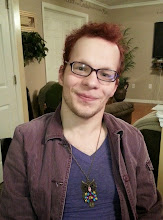
[image: close up of two Azure damselflies (Coenagrion puella)==insects that look very similar to dragonflies. The male is holding on to a blade of grass and the end of its long tale is attached behind the neck of the female damselfly, whose tail is attached to the bottom of the males abdomen. Together, there bodies form something that looks like a drawn heart.]
This is why work by people like Joan Roughgarden is so important. She's a trans woman ecologist who challenges essentialist fundamentals of darwinian thought: natural selection, mate selection, ethology (study of animal behavior), etc.
Also, not all animals have sex only for reproductive purposes. Dolphins, Bonobos, some species of antelope (often female-female sexual pairings), and others have sex for what what could be considered pleasure by human standards. Also, several marine mammals engage in massive orgies.
Chinstrap penguins have been known to form long term, monogamous relationship which they raise young. One-fourth of black swan sygnets are reared by homosexual (male-male) couplings.
And some animals, like the blacktip shark, have been observed to reproduce asexually (more specifically, parthenogenesis - the absence of the male gamete)
Lyretail anthias (Anthias squamipinnis) undergo chromosomal sex changes when necessary.
In the protozoan Paramecium bursaria there are eight sexes.
Life is beautiful and complex. And for every rule or axiom, there is always an exception or important nuance.

0 comments:
Post a Comment